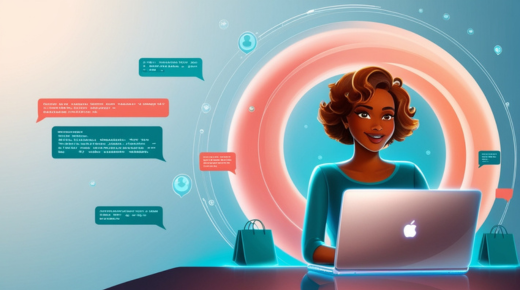In an era where digital convenience is king, conversational commerce—the use of messaging platforms to facilitate shopping and customer interaction—has become a powerful trend. At the heart of this transformation lies RCS (Rich Communication Services), the next-generation messaging protocol developed to replace SMS.
As brands strive to connect more personally with customers, RCS message is emerging as a critical tool that fuses the convenience of chat with the functionality of e-commerce. From product discovery to payment, RCS is revolutionizing how consumers shop, communicate, and interact with businesses.
This article explores how RCS is changing the landscape of conversational commerce and online shopping, why it matters, and how businesses can leverage it to stay competitive.
What Is RCS Messaging?
RCS is an IP-based messaging protocol developed by the GSM Association (GSMA) to upgrade the outdated SMS and MMS formats. Supported by Android devices and carriers worldwide, RCS brings a host of modern features such as:
- Rich media support (images, video, carousels)
- Read receipts and typing indicators
- Interactive buttons
- Suggested replies
- Location sharing
- Business verification and branding
Unlike traditional messaging, which is plain text-based, RCS transforms the chat window into a rich, app-like experience, all without needing users to download a separate application.
The Rise of Conversational Commerce
Conversational commerce refers to the intersection of messaging apps and shopping. Customers areincreasingly using platforms like WhatsApp Otp, Messenger, and now RCS, to interact with brands, get product recommendations, receive order updates, and even complete purchases—all within a single chat.
Why the shift? Because customers value convenience and personalization. They no longer want to navigate clunky websites or wait on hold for customer service. They expect brands to come to them, and to do so in a way that’s quick, simple, and conversational.
How RCS Elevates Conversational Commerce
Here are the key ways in which RCS is reshaping the online shopping experience:
1. Enhanced Product Discovery
With traditional SMS, brands were limited to 160 characters and plain text. But RCS changes the game:
- Brands can now share high-quality images, videos, and carousels of products.
- Customers can tap on interactive suggestions to browse collections or categories without leaving the chat.
- It becomes easy to highlight limited-time offers, top-selling items, or personalized recommendations directly in the conversation.
This leads to higher engagement rates, as customers are more likely to interact with rich content than basic text.
2. In-Chat Purchase Journeys
RCS enables a seamless end-to-end shopping experience, where users can:
- View products
- Add items to a virtual cart
- Choose delivery options
- Make payments
All of this happens within the native Messages app, eliminating the need to open a browser or app.
Some implementations even integrate Google Pay or other payment methods into the chat interface, making one-tap checkout a reality.
3. Personalized Recommendations with AI
RCS allows brands to integrate Whatsapp chatbot and AI-driven assistants that respond intelligently to customer queries.
For example:
- A customer types, “Show me black running shoes under $100.”
- The chatbot replies with a carousel of options, prices, and availability.
- Interactive buttons like “Buy now” or “Add to cart” make follow-up actions immediate.
This level of intelligent, dynamic response is what makes RCS so effective for personalized shopping.
4. Order Tracking and Customer Support
After a customer completes a purchase, RCS becomes the channel for post-sale communication, including:
- Order confirmations
- Shipping updates
- Delivery notifications
- Support interactions
With verified business profiles, customers know they’re dealing with a trusted source. Messages can even include tracking buttons, support links, or one-tap replies like “Need Help.”
This ongoing relationship builds trust and loyalty over time.
5. Security and Business Verification
One of the main concerns with SMS is phishing. With RCS, businesses are verified and branded. That means:
- Each business profile includes a logo, name, and verification badge.
- Customers can be confident they’re talking to a legitimate business.
- Enhanced security features reduce fraud and protect sensitive information.
This is especially important for financial transactions or sharing personal data.
Benefits for Businesses
RCS doesn’t just enhance the customer experience—it delivers real value for businesses:
Higher Engagement
Rich media and interactive elements make RCS messages far more engaging than SMS or emails.
Increased Conversions
Streamlined purchase journeys within the chat lead to reduced cart abandonment and higher conversion rates.
Lower Customer Support Costs
With AI and chatbot support, many common queries are resolved without human intervention, saving time and money.
Better Metrics
Unlike SMS, RCS offers analytics and delivery insights, helping businesses refine their campaigns and optimize performance.
Real-World Examples of RCS in Action
Subway
The fast-food giant used RCS to promote meal deals via interactive messaging. Customers could view mouth-watering visuals, choose menu options, and find the nearest location—all within the message thread. Result? A 50% higher click-through rate compared to SMS.
Myntra (India)
Myntra, an online fashion retailer, used RCS for flash sales, showcasing product carousels and one-click checkout options. Engagement rates spiked, and customer satisfaction improved thanks to real-time updates.
Airlines and Travel
Airlines like Lufthansa and KLM use RCS for check-in, gate info, and boarding passes—streamlining the travel journey and reducing support center calls.
Limitations and Considerations
Despite its promise, RCS does come with some challenges:
- Limited iOS Support: Apple’s iMessage does not support RCS yet. So businesses must fallback to SMS for iPhone users.
- Carrier Dependencies: Not all carriers fully support RCS, and global rollout is still ongoing.
- Data Connectivity Required: RCS requires an internet connection (mobile data or Wi-Fi) to function at its best.
However, as adoption increases and carrier infrastructure improves, these limitations are quickly shrinking.
The Future of Shopping Through Messaging
The rise of RCS is a reflection of a broader shift in consumer behavior—a move toward immediacy, interactivity, and intimacyin brand conversations.
As the protocol matures, we can expect:
- Deeper CRM integrations for personalized offers
- Voice and video support
- Advanced analytics dashboards
- Integration with smart devices and wearables
Soon, shopping through a chat won’t just be an option—it will be the preferred way for millions of users worldwide.
RCS is more than just a better way to text—it’s a strategic channel for modern e-commerce. With its ability to deliver rich, interactive, and personalized experiences directly within a user’s native messaging app, RCS is changing how consumers discover, interact with, and purchase products.
For businesses, it presents a massive opportunity to engage customers on a more personal level, increase conversions, and reduce friction in the shopping journey.
As consumer expectations evolve, one thing is clear: conversational commerce is the future, and RCS is paving the way.

